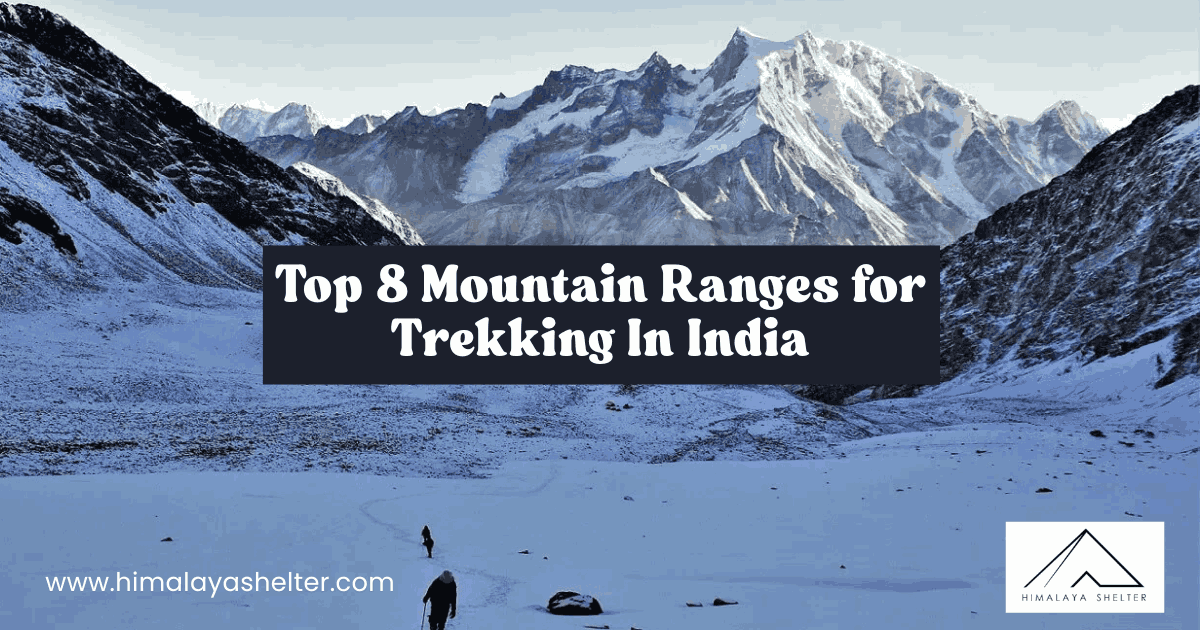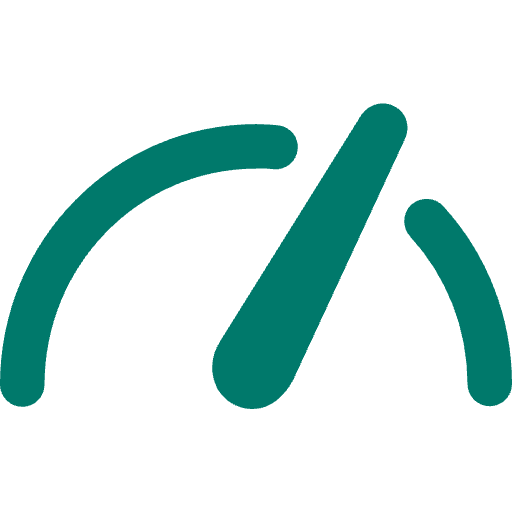
Markha Valley Trek
TREK DIFFICULTY
Moderate - Difficult
TREK DURATION
9 Days
HIGHEST ALTITUDE
17,200 Feet
GROUP SIZE
9-12
TREK DISTANCE
65 KM
BASECAMP
Ladakh
BEST TIME
June to September
PICKUP POINT
Ladakh
Markha Valley Trek Overview
Markha Valley trek takes you along the ancient silk route with astounding villages of Markha & Hankar, in a valley now situated in the Hemis National Park. The valley is located to the south of Leh and runs in the North West - South East direction. The trek follows the valley all the way up to Kongmaru La, a high altitude pass with over 17,250 feet in altitude, which connects it to a gorge on the other side, which finally leads you to "Chogdo" village, that connects to the Leh - Keylong highway at Martselang. The village of Markha, which is a highlight of the trek, can be accessed from either side and has other access points too. The Markha Valley trek, however, starts from the north-western end at Chilling, making inwards towards Markha Village, and proceeding ahead to Kongmaru La.
You will walk along the Silk Route in the Markha Valley Trek. The valley is situated in the southern part of Leh and extends in the northwest-southeast direction. Some beautiful villages like Markha and Hankar will be your stay for the night. The locals of Ladakh are very simple and happy-hearted. The homestays in the Ladakh region are usually cozy and beautiful. You can interact with the locals and witness the magic in simplicity. The traditional attire and the big Buddhist monasteries will allure you. The local food and warm hospitality will cheer you up. The Markha Valley Trek is an odyssey to adventure and Ladakhi life.

Day 1: Arrival in Leh, rest & Acclimatization
Day 2: Acclimatization Day - Explore near Leh
Day 3: Drive from Leh to Chilling, drive for 3 hours; Trek from Chilling to Skiu in 4-5 hours
Day 4: Trek from Skiu to Sara in 4-5 hours
Day 5: Sara to Markha village trek in 4-5 hours
Day 6: Markha to Hankar Village trek in 6 hours
Day 7: Hankar to Nimaling alpine ground trek in 4-5 hours
Day 8: Nimaling to Kongmaru La (5,250 m) and descend to Chogdo in 8-9 hours; drive to Leh in 2-3 hours
Day 9: Checkout from hotel in Leh
Your Markha Valley Trek is the hike to untouched natural beauty and culture. Plan your Markha Valley Trek with us. Our company is offering you the best trekking services in Ladakh. Enjoy the beauty of Markha Valley and leave all other things for us. We will take care of comfortable stays at homestays and camps. Our team is familiar with the Himalayan terrain and can operate in every condition. We provide customized trekking services where we plan the trek according to you. You give the instruction and we will plan the itinerary. We can customize the stays, meals and everything for you.
Himalayan Shelter team always supports eco-tourism. We believe that no one can know the place better than the locals. You will stay in the local homestay where you can feel the love of Ladakh. The people are very warm in the cold city. You only have to feel the authentic Ladhaki culture and appreciate the surrounding.
The Markha Valley Trek has deep connections with the Ladakhi culture and spirituality. Many people know this place as “Little Tibet” due to the big influence of Tibetan culture. This trail is an important route for the locals. Traders have been using the same route for centuries. They used to travel with their Yaks and Horses via the Markha Valley to sell wool, salt and other items. You can see many villages along the Markha River. This is a beautiful and centuries-old trail that has been a crucial part of the local settlement.
The Markha Valley route emerged as a trek in the late 20th century. You will see big and small monasteries on the trek. Some of these monasteries are centuries old. The culture of Leh-Ladakh is very different from the rest of the North Indian region. It's unique but perfect in every way. You will see a monastery or shrine in every village. Locals pray in the monastery and request wellness. The prayer flags look very beautiful as they fill colours in the barren mountains. These flags represent peace and hope. Your Markha Valley Trek is the perfect blend of adventure and spirituality.
- Beautiful Landscape
-
- Markha Valley Trek is popular for the mesmerizing landscape. Himalayan treks usually follow with forests and grasslands. But Markha Valley is different. The valley is barren and has moonlike terrain. The arid canyons and lush green patches in the trail feel very different. The snow-capped mountains in the far look surreal.
- Remote Ladakhi Experience
-
- You will stay in the traditional Lakdahi style homestays. The villages like Sjiu, Markha have whitewashed mud-brick houses.
- These homestays are usually small and cosy. Enjoy the warm meals and great hospitality of the locals.
- Trek Difficulty
-
- The Markha Valley Trek is a challenging trek. You will start from 3200 m and will ascend to over 5000 m. You will cross many rivers on the trek. The water is usually icy-cold and your feet can go numb for some time.
- Flora And Fauna
-
- Ladakh has a very different type of habitant. The valley is the part of Hemis National Park where you can spot rare Himalayan wildlife. You can see blue sheep and mountain hares.
- Markha becomes a popular place to spot snow leopards in winters. The green patches throughout the trail feel refreshing.
The Markha Valley Trek is usually considered as Moderate to Difficult level trek. The trail is not very challenging, but the altitude and the long walking hours can make the trek challenging.
- High-Altitude Trekking
-
- You will start your trek from Leh which has an altitude of 3200 m. The journey will continue to Kongmaru La (5200 m). Many trekkers can face AMS problems after reaching 4000 m. You should acclimatize for 1-2 days in Leh.
- Trek Length and Long Walking Hours
-
- The Markha Valley Trek is about 65 km long. You will cover this distance in 8-9 days. The terrain is not very difficult but you have to walk for 8-10 hours daily. There are no technical sections on the trek. But you need good strength to complete the trek without any difficulty.
- River Crossing
-
- There are many river crossings in the Markha Valley Trek. The water level can increase in the summertime. You will have water up to knee-length. River crossing is difficult, but the water is freezing cold. Your feet can be numb for a while after crossing the river.
- Weather Conditions
-
- A high-altitude regions mean unpredictable weather. Markha Valley is in the rain-shadow area, but you can still get sudden rain. The trails can disappear in the snow. The temperature can drop to sub-zero temperatures even in the summer.
The best time to plan your Markha Valley Trek is the summer and early autumn. These seasons are very beautiful and the trails are also accessible.
- Markha Valley Trek From June To Early July
-
- The trails to Markha Valley open in June. This is the early season and you will see snow in the high-altitude areas. The day temperature is around 12-18℃ and the night temperature is usually around 0-5℃. The sky will be clear and you will see the majestic Himalayan peaks.
- Markha Valley Trek From Mid-July To August
-
- This is the peak season for trekking to Markha Valley Trek. The days are usually warm and nights are cool. You can see barley and mustard crops in the fields. Rain can occur sometimes but usually this area remains dry.
- Markha Valley Trek From Late-August To September
-
- Autumn is also a good time to plan your trek. The sky remains clear and the views are majestic. You will see less trekkers on the trail. The days feel warm but the nights can be freezing. The barley fields become golden and look very pretty.
- Markha Valley Trek From October To May
-
- The winter season is very harsh in the Ladakh region. The temperature drops to sub zero and the trail is covered with snow. Trekking is not possible in winters. But some people visit Markha Valley in winters for snow leopard expeditions.
- These period is characterized by relatively mild temperatures, clear skies and sunny days for creating ideal conditions for trekking
Your Markha Valley Trek will start from the beautiful city of Leh. This is a base city and here you can find small markets and shops. Reach Leh and spend a day there for acclimatization. The city is very beautiful and you can visit monasteries there.
- Leh Via Road
-
- You can reach Leh from Manali and Srinagar. Reach Manali and take the Leh Highway. The distance is about 473 km. This route only opens from mid-June to September. The route is Manali to Leh via Keylong and Sarchu. This route will take two days. Another route to Leh is Srinagar - Leh Highway. This is 434 km long and opens from May to October. The route is Srinagar to Leh via Kargil.
- Leh Via Railways
-
- Railway is not a good option to reach Leh. All the nearest railway stations are at least 650 km away. Udhampur Railway Station is 650 km away from Leh and has fewer train connections. Jammu Tawi Railway Station is 700 km away from Leh. This station has good train connection from all major cities. Reach Jummu and take a bus to Srinagar. Now follow the Srinagar- Leh highway route.
- Leh Via Air
-
- The easiest means of transportation is to fly to Kushok Bakula Rimpochee Airport. You can find direct flights to Leh airport from all major cities. The airport is just 4 km away from the main city.
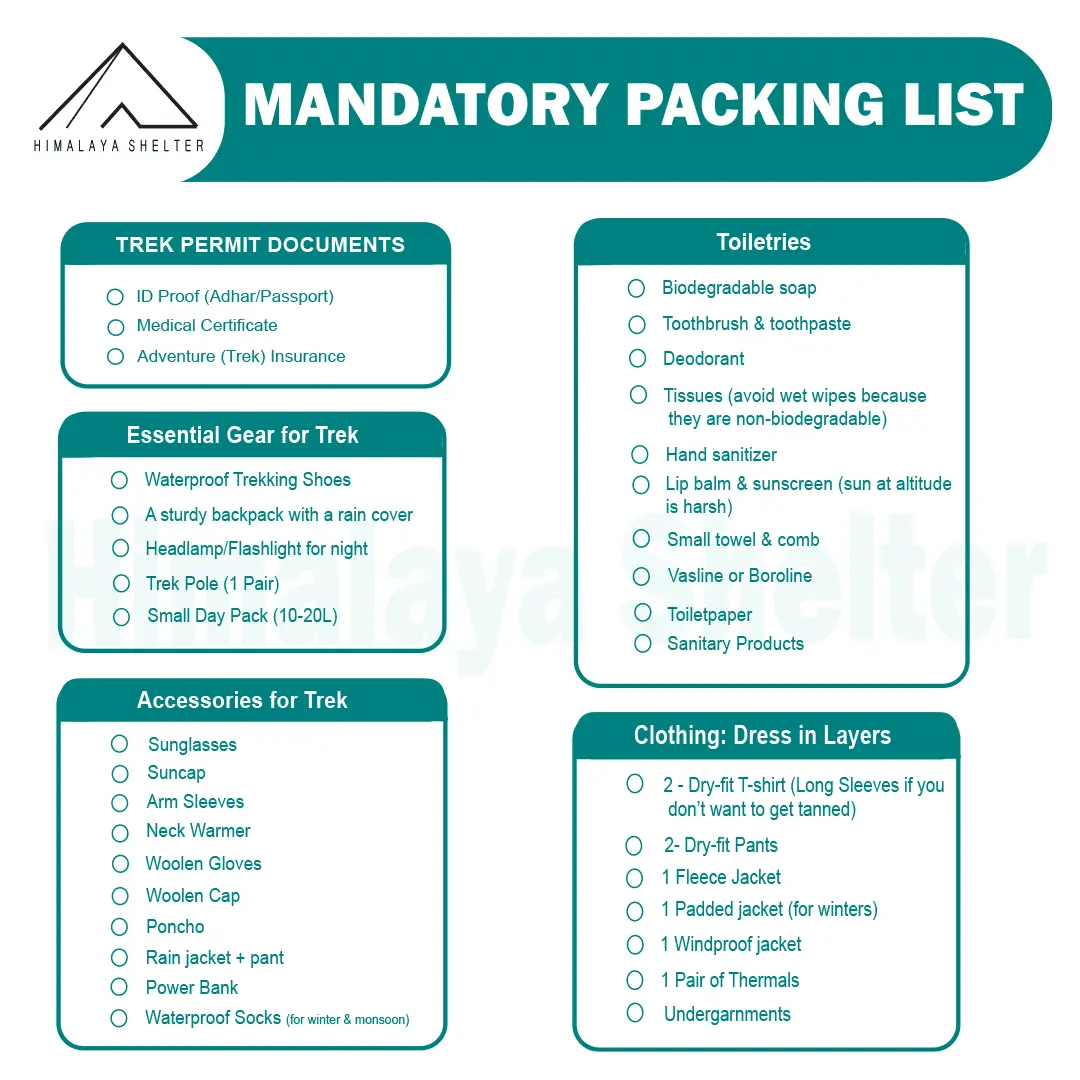
Mandatory Backpacking List for Aancha Top Trek
1. Clothing and Backpack
Get a good backpack (50 L) with a rain cover. Look for a bag that can provide you good back support. Pack 4 quick-dry t-shirts and 2 trekking pants. Get a pair of thermals (upper and lower) for night. Pack a fleece jacket or woolen sweater as a mid-layer. Get a waterproof wind breaker for sudden rain and chilly winds. For winter trekking, get a good down jacket. Now pack a woolen beanie and a balaclava. Get two pairs of gloves (woolen and waterproof). You should also pack a suncap for the daytime.
2. Footwear
You should look for good quality trekking shoes. Your shoes must be waterproof and provide good ankle support. Do not wear a new pair of shoes on the trek. Your feet must be familiar with the shoes. Now pack 4 pairs of trekking socks and 2 pairs of woolen socks. Pack a pair of comfortable slippers or sandals for the campsite.
3. Personal Care
For personal care items, start packing with your toiletries. Get a small zipper pouch and pack all the toiletries. Now look for a quick-dry towel and a toilet roll. You should also pack hand sanitizer and moisturizer. Pack a sunscreen that can protect your face from sunburn. You can also pack some snacks for the trek.
Physical Fitness Preparation for Trek:
To overcome the difficulty level of trekking, it requires strong cardiovascular endurance, muscular strength, and overall physical fitness. Incorporate these exercises into your routine to increase strength, stability, and stamina, which will help you tackle difficult terrain sections of the trail at high altitudes.
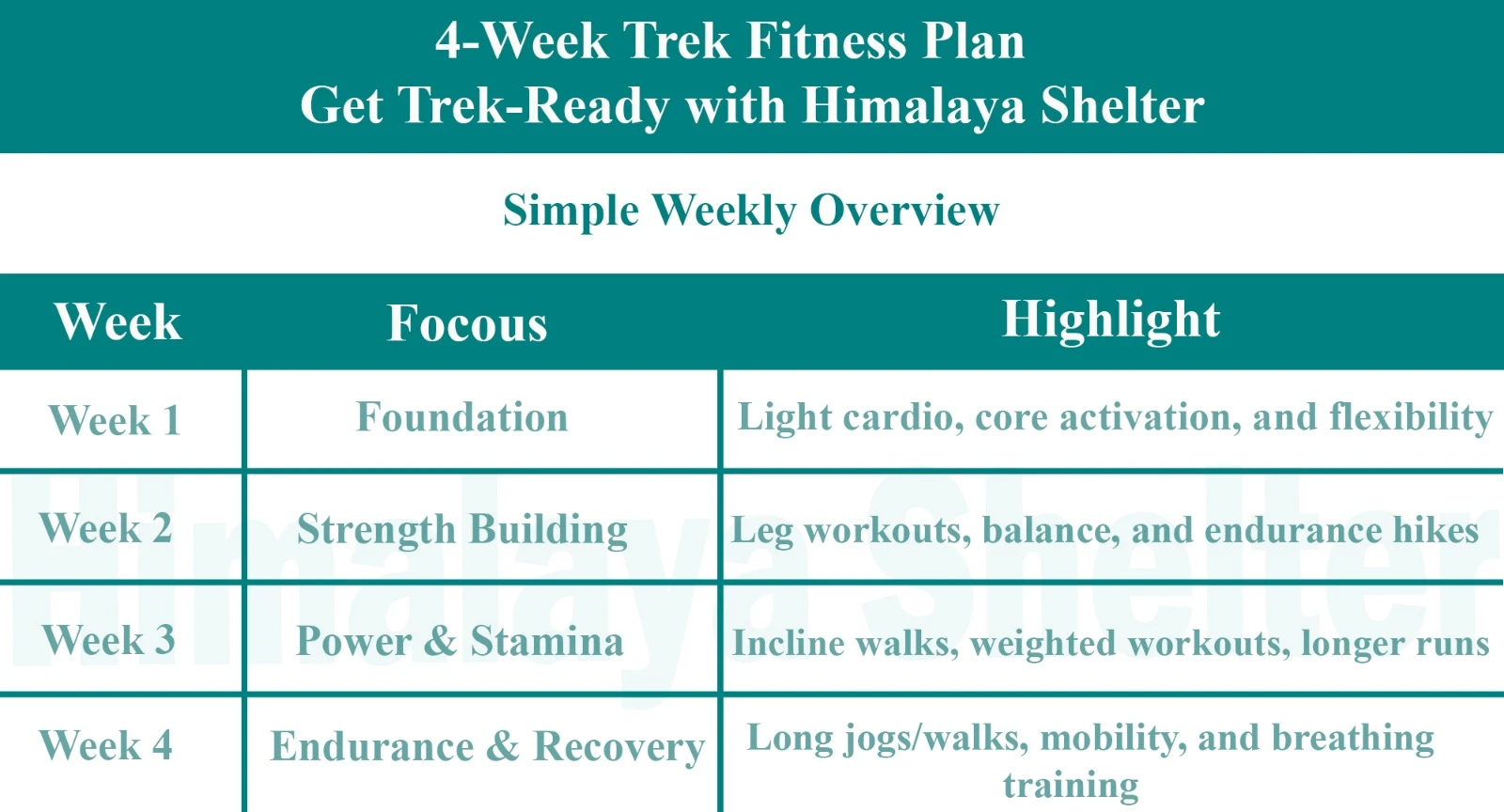
Overview
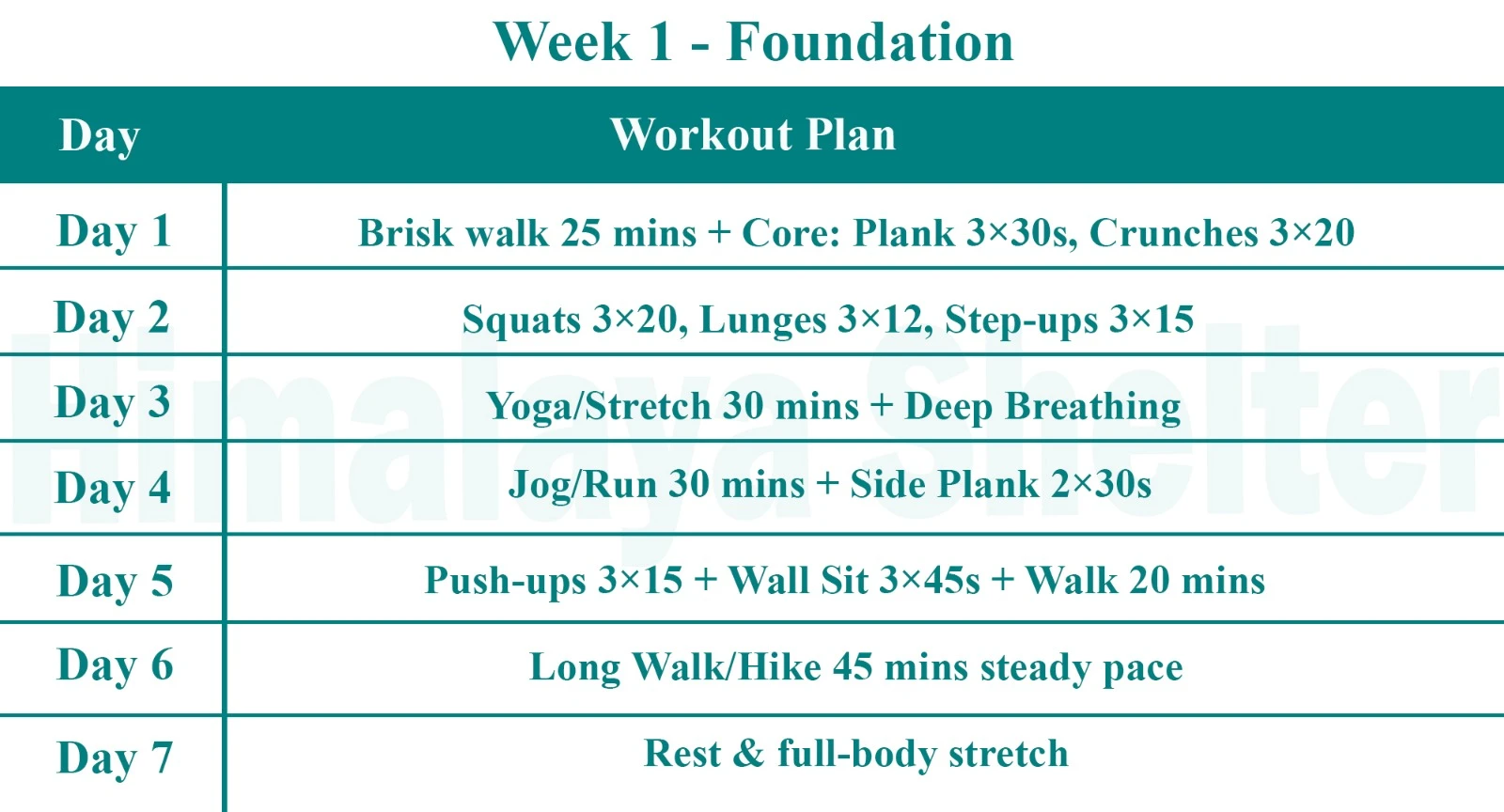
Foundation
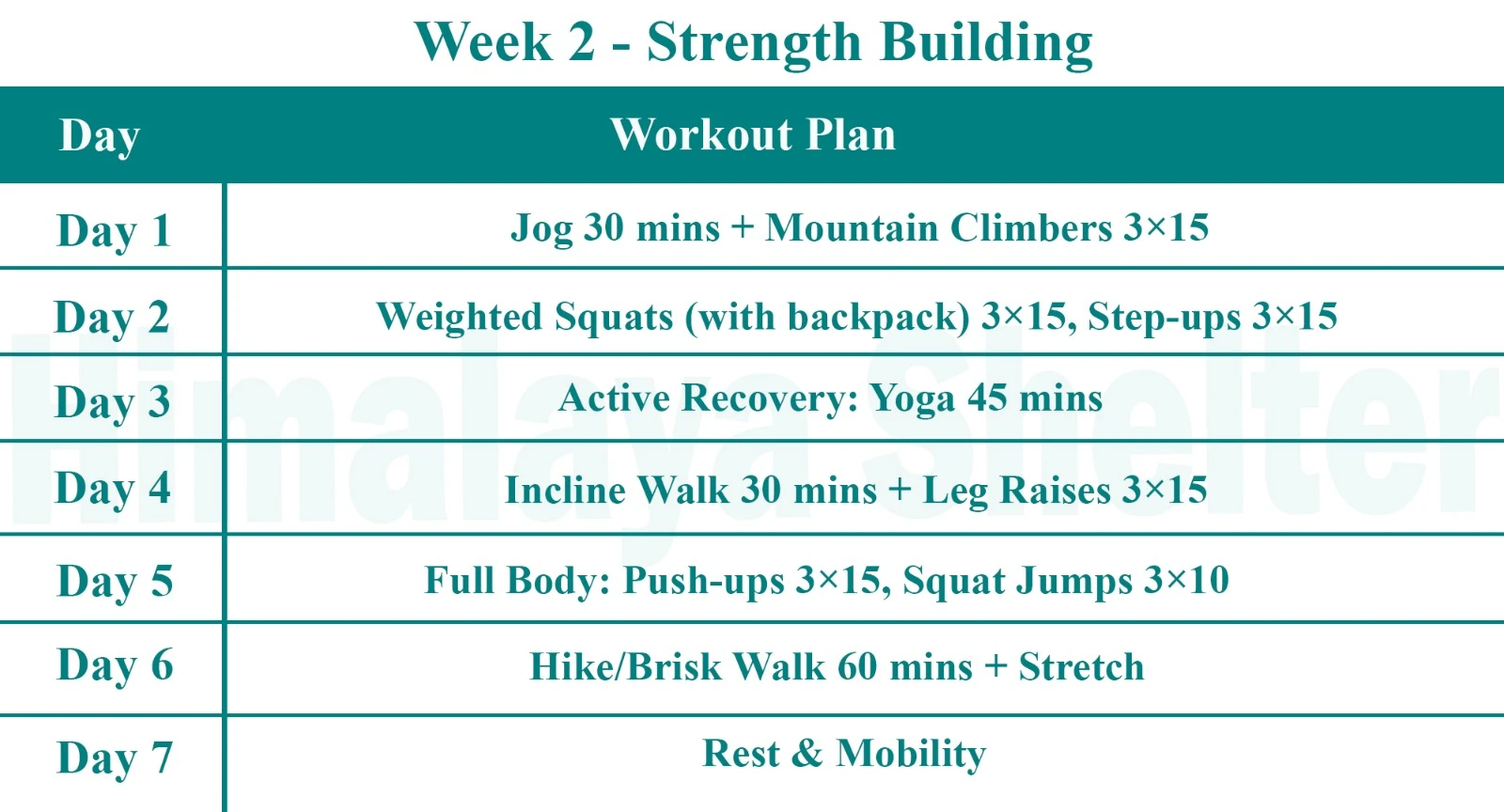
Strength Building
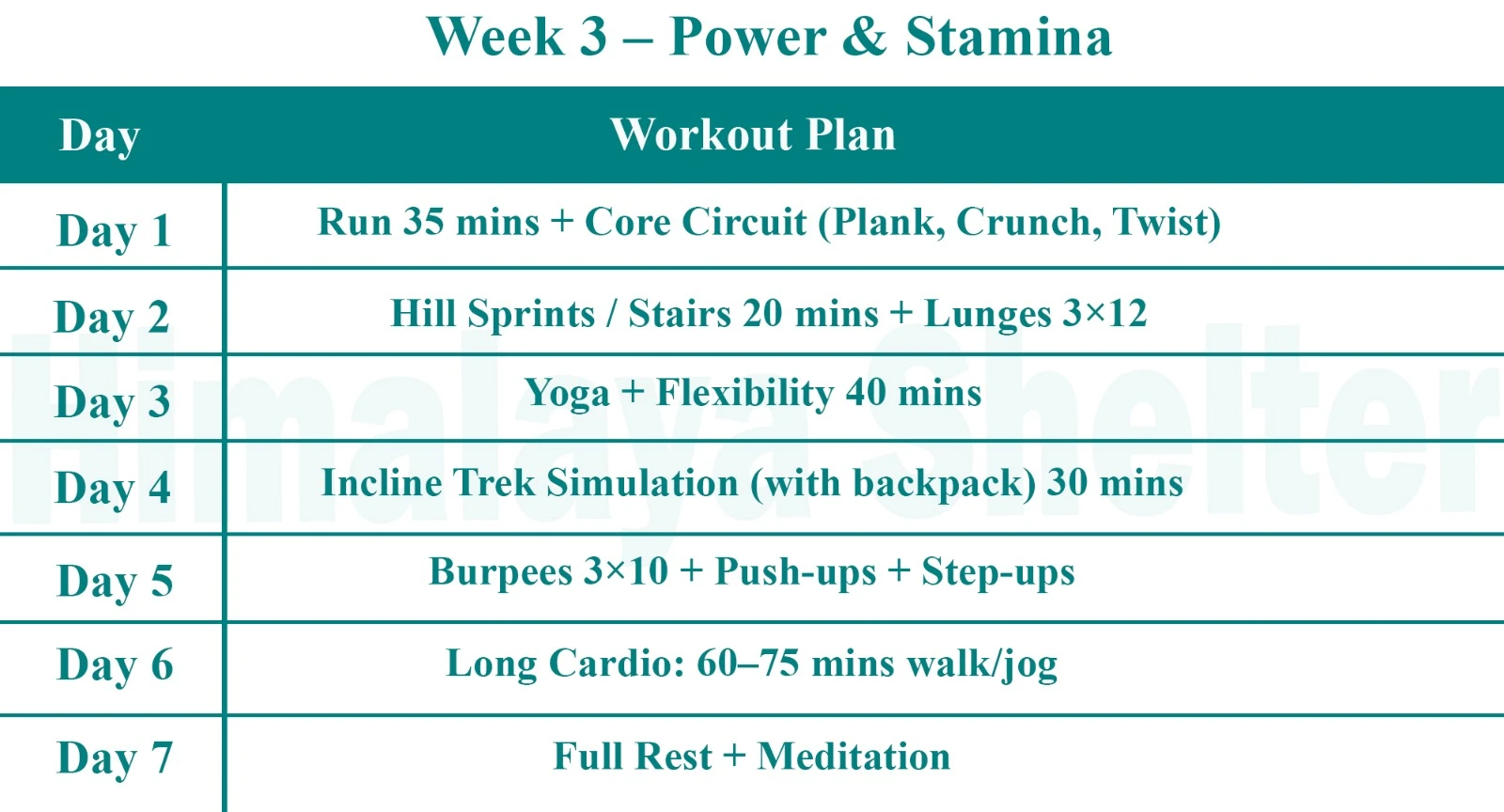
Power & Stamina

Endurance & Recovery
The villages of Markha Valley are known for their beauty, culture, and rich historic past, the remnants of which are still to be found along the route. The ruined palace complex in village Markha, the Monastery ahead of Markha rising atop a steep cliff with its sole inhabitant, a Buddhist monk, or the remnants of a millennium-old, now abandoned fort, surrounding the Hankar village, are all a reminder of the glorious past this valley had, with its sheer beauty still intact.
You will get to walk across sea buckthorn forests on your way to the Markha valley and if you're trekking in September, you can relish the freshly harvested Leh berries (sea buckthorn berries) and Leh berry Juice. The trek offers a journey across the naked mountains of Ladakh, with their ever-changing hues, and offers spectacular views of Stok Kangri and Kang Yatse peaks (I & II).
During the summer months and until September, the days are dry and warm with a bright overhead sun, enough to cause dehydration, however, the evenings and nights can be really cold, amidst the desert landscape that this valley has. The mountainsides are naked with little or no vegetation, and only the valley below has scattered trees and fields along the entire route. The campsite at Nimaling can be really cold owing to the high altitude.

Day 1: Arrival in Leh, Rest & Acclimatization

- Location – Leh
- Altitude – 3,500 meters | 11,480 feet
- Accommodation – The Bodhi Tree
After arrival at Leh Airport, our cab will pick you up and transfer you to the hotel. You will be spending the night at The Bodhi Tree, one of the best rated accommodation in Leh.
Relax and rejuvenate at the Hotel. Tomorrow we set out to explore near Leh.
Day 2: Acclimatization Day - Explore near Leh

- Location – Leh
- Altitude – 3,500 meters | 11,480 feet
- Accommodation – The Bodhi Tree
After a sumptuous breakfast at the hotel restaurant, we set out to explore in and around Leh.
We start with the Leh Monastery, which is an age old monument, also known as as the Lhachen Palkhar. King Sengge Namgyal built the Leh Palace during the 16th Century and it was completed by the 17th century.
- The facades of the Leh palace resemble that of the Potala Palace in Lhasa.
- In the evening we can visit the Leh Market and drive to Shanti Stupa for a vivid sunset.
- Dine in a local restaurant with some local chamomile tea and a variety of local cuisine.
Day 3: Drive From Leh to Chilling, Drive for 3 Hours; Trek From Chilling to Skiu in 4-5 Hours

- Location – Skiu
- Altitude – 3,400 meters | 11,150 feet
- Accommodation – Homestay
- Trek – 9 KM
- Drive – 65 KM
The day starts with a drive from Leh, early in the morning, along the Leh – Srinagar highway which runs parallel to Indus river. After 35 KM on this well paved beautiful road, we arrive at the confluence of Indus and Zanskar rivers, where we take a discourse towards south, parallel to river Zanskar, which now runs right along the road, and will continue to, until we arrive at Chilling. From chilling we are to cross the river, by taking the recently constructed bridge. The route ahead is an unpaved road, running now along the Markha river. Having already come across 3 different rivers, it sure is a delight.
We arrive at Skiu in 3 hours. After initial climb through hairpins, the route is very gradual, henceforth. Halfway we arrive at Village Kaya, and Skiu is another 3 KM up ahead. Skiu is a beautiful village tucked amidst tall mountains, with options for Homestay, as well as camping, but the recently constructed motorable road has provided the option to trek Further up to Sara, a hamlet, as if an Oasis in a desert. We rest and relish a warm meal, preferably a dish that goes by the name of this village, i.e. “Skiu”.
Day 4: Trek From Skiu to Sara in 4-5 Hours

- Location – Sara
- Altitude – 3,500 meters | 11,480 feet
- Accommodation – Homestay
- Trek – 11 KM
After breakfast, we start our trekking journey to Sara, which is around 11 KM ahead. We continue along this well marked trail running parallel to the river Markha. Halfway along the route we come across a Sole Tea Shop, which is women run. You can rest here, enjoy a cup of Tea or Coffee, but our favorite happened to be the fresh apricot juice which they happen to serve, although in limited quantities.
A stream cuts across the trail here, which can be used to refill your water bottles. The trail offers practically no shade except slightly ahead of the Tea Shop, where a short section of young trees render much need cool to the warm environment. To supplement yourself with water continuously is very important.
After around 3 KM we come across a bridge and cross over to the other side of the river, into a small forest patch, before the trail clears up again. The route is straight ahead along the river with only mild ascent all the way up the hamlet of Sara. The Hamlet will only appear once we are very close to the settlement, less than half a KM, where a hump in the landscape obstructs the view ahead. Once atop the feature, which is lined with a Stupa and prayer flags, we can see the beautiful settlement with 3-4 houses which all offer the option for Homestay, as we as camping. Green Fields, blossoming trees surrounding these houses are in stark contrast to the landscape all around.
Day 5: Sara to Markha Village Trek in 4-5 Hours
- Location – Markha
- Altitude – 3,700 meters | 12,140 feet
- Accommodation – Homestay
- Trek – 10 KM
The trail from Sara to Markha is again a gradual one, with no steep ascent and can be easily covered in 3-4 hours at a slow pace. After less than 2 KM from Sara we cross a bridge to our left which takes us to the true right of the river (i.e. river is now flowing on our right hand side).
Slightly further up we come across fields alongside a small village settlement, against backdrop of a steep mountain face. We continue along the trail, which slightly ascends to a higher open ground with a Stupa and Prayer stones (Mani stones), carved intricately. Take due note that you always cross these religious marking from the left (the stupa or prayer stones being on your right hand side). We quickly go downhill near the river and cross a small stream over a bridge of wooden logs.
Almost 2 KM prior to Markha village we again cross the river to our right with two bridges, one of which may be broken and will need some effort to traverse. With 1 more KM to go, we arrive at a Tea shop & Homestay with sunflowers blooming in their vicinity, offering a splendid sight with a stark contrast. A few more homestays and a campground are scattered ahead along the route, which hints at the proximity of Markha village. The last few hundered meters stretch to the village is a steep climb, which concludes in the arrival at the Monastery, followed by the village with its houses spread across the lush fields.
We can spend some time at the Monastery before we continue inwards. The village has a vivid historic past and unique culture, and the day can be spent exploring these.
Day 6: Markha to Hankar Village Trek in 6 Hours
- Location – Hankar
- Altitude – 4,000 meters | 13,120 feet
- Accommodation – Homestay
- Trek – 11 KM
The trek from Markha village to Hankar goes through a Monastery – the Tacha Gompa and a small settlement called Umlung. There are very few houses here with a couple of tea houses. You will see a large white canvas tent from far away as you approach Umlung.
The Tacha Gompa is inhabited by a sole Buddhist monk, who resides in the Gompa situated atop a steep cliff. A very steep staircase leads to the monastery situated a few hundred feet high above the valley below.
The last stretch to the village Hankar requires crossing a couple of more tea houses and then climbing up a steep section of trail that cuts through a cliff. As we reach the top we are welcomed by panoramic views of the Hankar village and its fields to the left, as well as a millennia old fort remains on a mountain top to the right.
Day 7: Hankar to Nimaling Alpine Ground Trek in 4-5 Hours
- Location – Nimaling
- Altitude – 4,700 meters | 15,420 feet
- Accommodation – Camping
- Trek – 9 KM
Day 8: Nimaling to Kongmaru La (5,250 M) and Descend to Chogdo in 8-9 Hours; Drive to Leh in 2-3 Hours
Day 9: Checkout From Hotel in Leh
After breakfast you may checkout from Hotel to either return from Leh or you may extend your travel for a guided/unguided tour of Ladakh including visiting places such as Khardunga La, Pangong Tso, Tso Moriri, Nubra Valley etc.
Our treks are specially designed by the experienced team at Himalaya Shelter, taking you on an adventure of a lifetime all while making you connect not only with the bountiful nature but also with yourself and with others on the trek with you creating wonderful memories which will last you a lifetime. All Himalaya Shelter treks are guided by experienced Trekkers having vast knowledge and experience of the region, providing with insightful information and stories pertaining to the region’s flora and fauna and the history of the region whilst the trek. It is safe to say that on successfully completing the trek, one will gain tremendous insight and experience along with lifetime memories.
Inclusions
- Transfers from Leh city to the base-camp and return drop to Leh city - Toyota Innova
- Accommodation – At Base Camp, stay at a local homestay or guest house for one night each, which will give you an insight into the authentic lifestyle of the locals.( INR 5000 per person extra for single sharing throughout the trek )
On Trek stay in a 2-person Vango Halo Pro/A-Shape tent, which is to be shared by two trekkers, built to withstand extreme weather conditions and at the same time making you comfortable after a hard day’s trek. - Camping Equipment – specially designed sleeping bags that can withstand harsh weather conditions, foam mattresses. Other safety gear like microspikes, gaiters, an ice axe, and helmets will be provided.
- Medical Kit – our team will be equipped with an extensive medical kit, which our team is trained and experienced to use. Oxygen cylinders are used after they are thoroughly inspected throughout the Trek. Even campsites have large oxygen cylinders as backups.
- Permission - Forest entry charges for Indian nationals (Additional charges will be applicable for international tourists)
- Meals – Breakfast, packed lunch (on trek days), evening snacks, and dinner will be served. A hearty, delicious, and nutrition-filled Veg meals with egg preparation will be provided throughout the trek. (Jain and Vegan Food can also be arranged on prior notification.)There will be a dedicated Kitchen Tent along with a dining tent, which will have a dining table too.
- Our Team – A highly experienced and AMC-certified Trek Leader who will help ensure that the entire trek goes smoothly and safely while navigating the challenging conditions during the trek, and is skilled enough to navigate any medical emergency that can arise during the trek. Local and route Guides who are well-versed with the region and provide an in-depth insight into the local customs and knowledge of the flora and fauna endemic to the region. A dedicated Kitchen staff, which includes a Cook, a helper, and other support staff.
- There will also be porters and mules to carry common equipment.
- Cloakroom - We have a cloakroom facility available for extra luggage. Every trekker is permitted to leave their luggage behind at no charge.
Exclusions
- Personal expenses like tips, personal medicines, phone calls etc.
- Travel Expenses - Travel expenses from your hometown to the mentioned Pick-Up Point are not included in the trek fee.
- From the scheduled pick-up spot to the base camp, we have our own fleet of vehicles like Bolero, Innova, Dezire, or Tempo Traveler (12-seater). This is be shared by trekkers for a pre-decided amount. All vehicles are non-AC.
- Personal Equipment - Any personal gear like jackets, shoes, cutlery, or backpacks are not included in the trek fee. We recommend renting them from our Rental Store for an affordable fee. This can be pre-arranged to avoid last-minute hang-ups.
- Offloading - We encourage carrying your backpack to get into the true spirit of trekking. However, if needed, you can opt to offload your personal luggage of up to 12 kgs for an additional cost of INR 500 per bag per day.
- Trek Insurance - A mandatory trek insurance fee is charged in addition to your trek fee. Since most medical insurance doesn’t cover adventure activities, trek insurance offers essential coverage, enhancing your safety without a significant financial burden.
- Buffer day on the trek - We have kept a buffer day on the trek to account for any weather-related delay. If this is utilized, you will need to pay an extra amount to your trek leader.
- Anything apart from inclusions
- Please carry a lunch box for a packed lunch/breakfast to avoid using polythene and Aluminium foil.
Keeping the Himalayas clean is our own responsibility. Reduce the use of Plastic when you are in the abode of the Sacred Himalaya. 🌱
The Markha Valley trek is a well-known trekking route in the Ladakh region of northern India. It takes you through the stunning landscapes of the Hemis National Park, with views of snow-capped peaks, ancient monasteries, and remote villages.
Markha Valley Trek total distance of the trek is 65 - 70 km from Chilling to complete this distance. It takes around 7 - 8 days to complete the trek. This includes trekking, acclimatization, and rest days.
The best time to do the Markha Valley trek is from mid-June to mid-September. During this period, the weather is relatively mild, and the trails are accessible.
Yes, a permit is required for trekking in the Hemis National Park, which encompasses the Markha Valley. This permit can be obtained in Leh.
It’s not mandatory to hire a guide, but it’s highly recommended, especially if you’re not experienced in high-altitude trekking. A guide can help with navigation, and acclimatization, and provide valuable local knowledge.
The trek is considered to be moderately challenging. Trekkers will face high altitudes, river crossings, and some steep ascents and descents. It’s important to be in good physical condition and have some prior trekking experience.
The highest point on the trek is the Kongmaru La Pass, which is situated at an altitude of approximately 5,100 meters (16,732 feet) above sea level.
There’s many villages on the trekking route, where you can find homestays. Every home has a homestay. Also you will find pitched tents and tea houses along the way.
Some essentials include warm clothing, a good quality sleeping bag, trekking shoes, a raincoat, a water bottle, a first-aid kit, and personal toiletries. It’s important to pack light but ensure you have all the necessary gear.
he trek usually starts from a village called Spituk, which is about a 30-minute drive from Leh. You can reach Leh by air from major Indian cities like Delhi, or by road from Srinagar (in Jammu and Kashmir) or Manali (in Himachal Pradesh).
The main risks include high altitude sickness, sudden changes in weather, and rough terrain. It’s crucial to acclimatize properly, stay hydrated, and be prepared for varying weather conditions.
There are several ways to reach Leh.
- By Air: With Kushok Bakula Rimpochee Airport in Leh, major cities like Delhi, Mumbai, Jammu, Srinagar, and Chandigarh are directly connected.
- By road: You can plan your road trip with a bike or a car from the Manali - Leh highway or the Srinagar - Leh highway, and direct buses are running from Delhi to Leh, Chandigarh to Leh, Manali to Leh, and Jammu to Leh.
- By Train: The Nearest railway station to Leh is Jammu Tawi, from where you can take a bus or hire a cab to reach Leh.
There are many of the best places to explore in Leh-Ladakh, such as natural wonders, monasteries, and cultural and historical sites. Here are some places among them:
| Natural Wonders | Monasteries & Cultural Sites | Historical & Spiritual Spots in Leh |
| 1. Pangong Tso | Thiksey Monastery | Leh Palace |
| 2. Nubra Valley | Hemis Monastery | Shanti Stupa |
| 3. Khardung La Pass | Alchi Monastery | Gurudwara Pathar Sahib |
| 4. Magnetic Hills | Spituk Monastery | Stok Palace Museum |
| 5. Indus-Zanskar confluence | Diskit Monastery | |
| 6. Tso Moriri |
You will find few water streams along the trail, not much and the water Markha river is not drinkable. So before starting the trek each day feel the water from the tea house or from homestay.
The mobile network coverage in Markha Valley is very limited. The villages of Ladakh have satellite phones for emergencies, and personal satellite phones there are strictly prohibited. And phones with local sim card will work in Ladakh.
Most homestays in the valley use small solar systems. You can usually charge your camera or phone. But do not count on it all the time. Power can be limited.It might go out on cloudy days.
It is smarter to bring extra batteries or a strong power bank. Also, the cold up high drains batteries much faster than you think.
Read More on Markha Valley Trek
Photo Gallery








Treks by Categories
Treks By Month
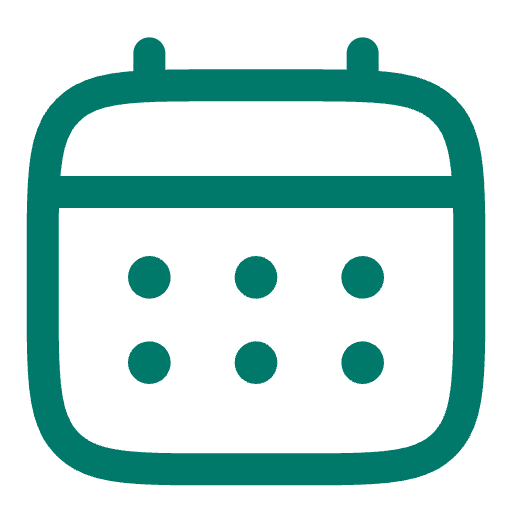
Treks By Experience




